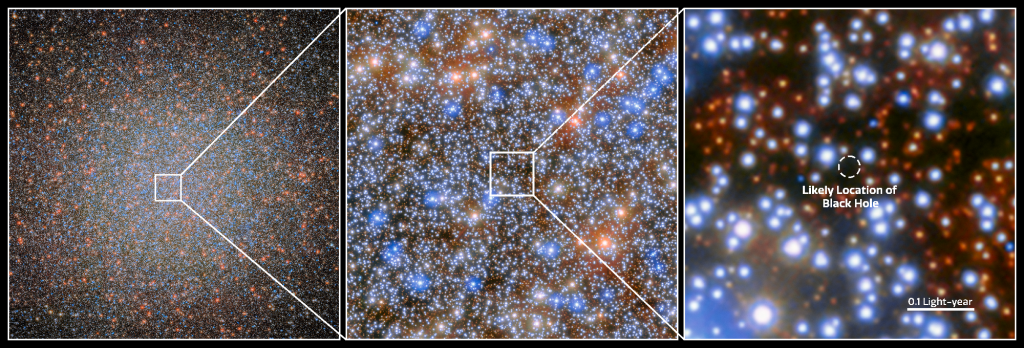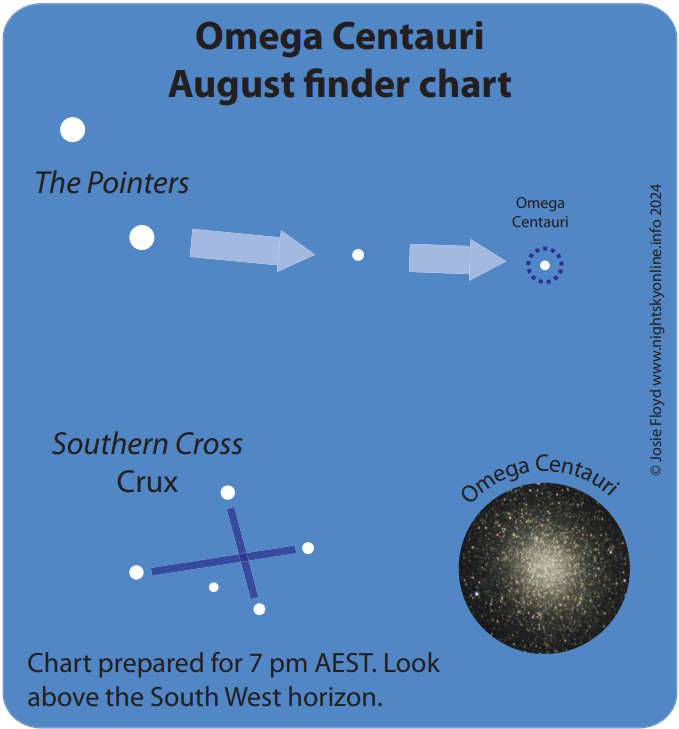Last month, the mainstream media covered the discovery of the closest known black hole to our solar system. It is in a globular cluster known as Omega Centauri 17,700 light years from us.
The previous version of this post had a chart for July to locate Omega Centauri. I have created an August version of this chart. This will assist you with your ‘star hopping’.

By definition, it is impossible to visually observe a black hole. The next best thing is to observe the celestial object it is located in (Omega Centauri). Omega Centauri is the largest and brightest globular cluster in our night sky. It is so bright that it appears to the unaided eye as a faint star and a fuzzy blob in binoculars. In a large telescope, it is breathtaking!
Use the above chart to find Omega Centauri. You can star hop from the second of the two ‘Pointer Stars to find it. Just follow the arrows on the chart and in the sky.
More information about this potential black hole candidate can be found on the Hubble Space Telescope website.
